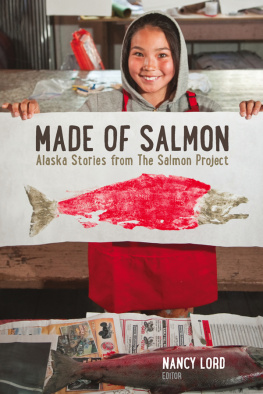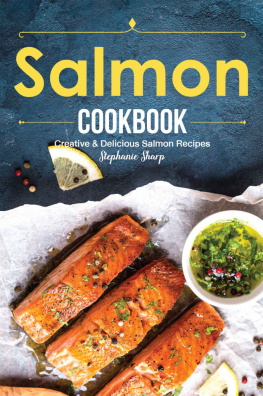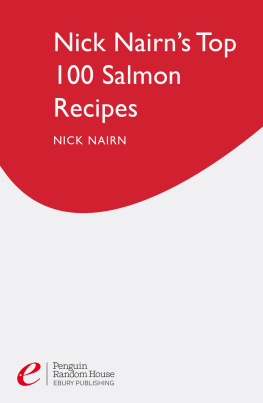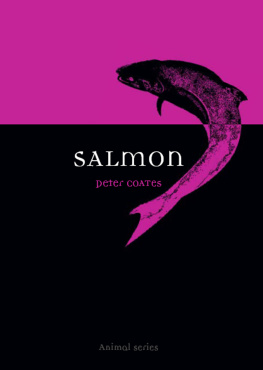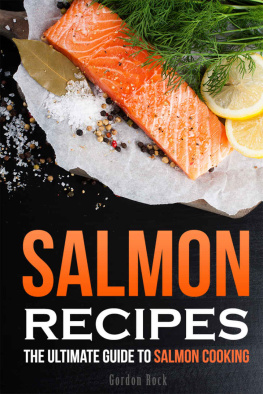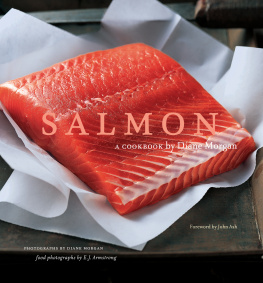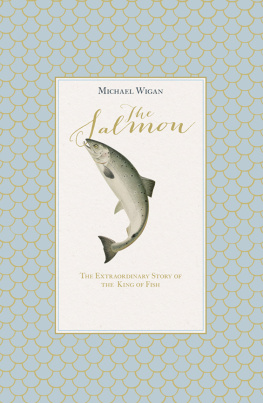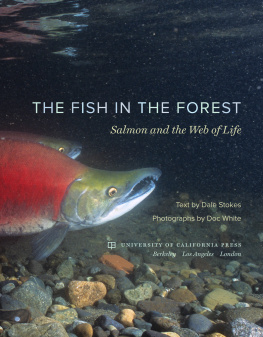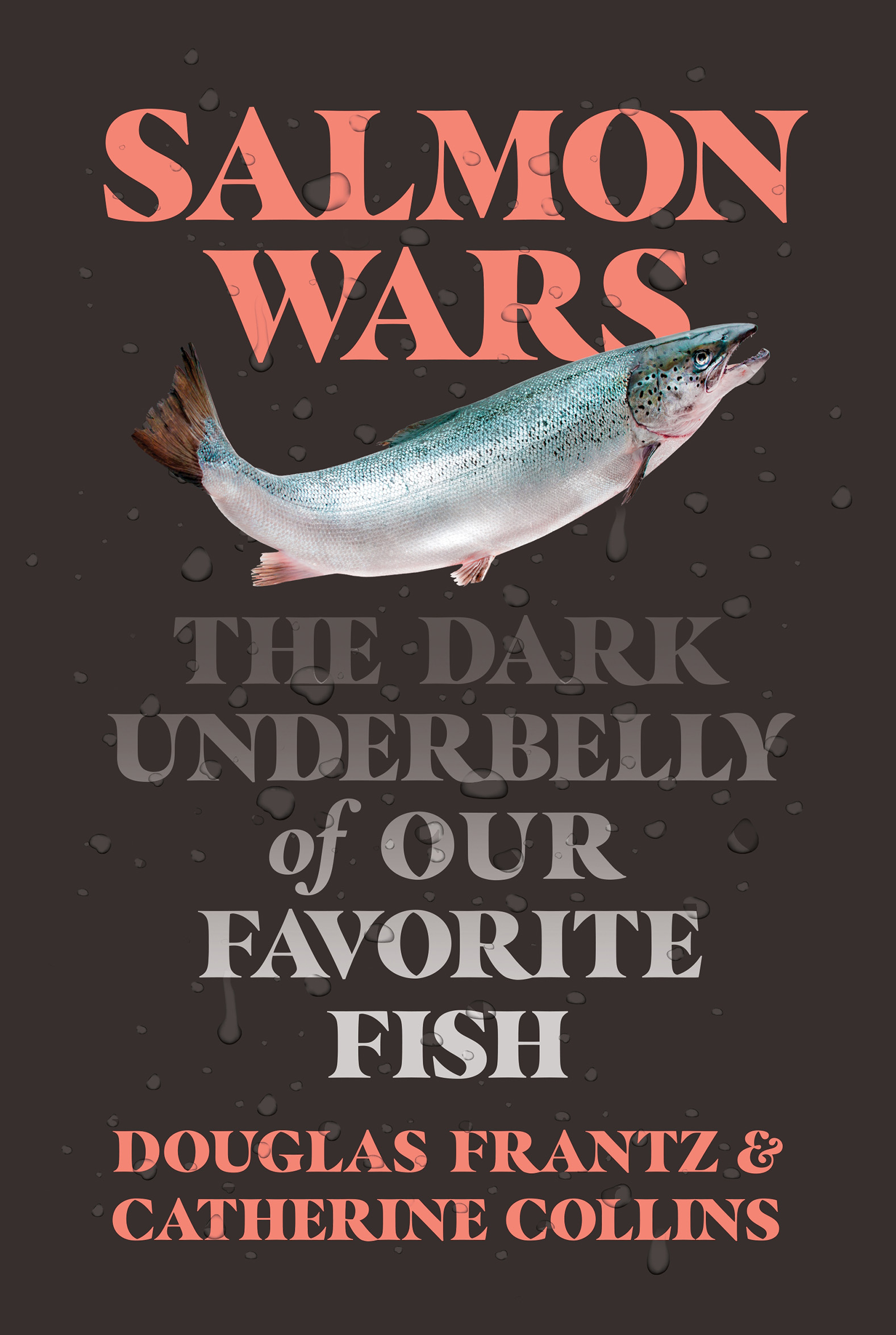Contents
Guide
Pagebreaks of the print version

The author and publisher have provided this e-book to you for your personal use only. You may not make this e-book publicly available in any way. Copyright infringement is against the law. If you believe the copy of this e-book you are reading infringes on the authors copyright, please notify the publisher at: us.macmillanusa.com/piracy.
In memory of Paul Collins, a dedicated fly fisherman
Every trip to the grocery store presents a dilemma. Which cereal do you buy? Are the chickens that laid the eggs really cage-free? What about trying that new plant-based meat? A hidden problem awaits at the seafood counter, though, when considering salmon.
This might seem surprising. Consumers have been told that salmon is a healthy and environmentally friendly food. Doctors recommend eating salmon for protein, nutrients, and heart-healthy omega-3 fatty acids. The U.S. Department of Agriculture suggests two servings of fish a week. The salmons packaging may show a fish leaping upstream in pristine rivers and boast that it is a certified-natural product: organic, sustainable, naturally raised. Sure, there are many salmon choices and little information to help consumers choose from among them, but shouldnt any fillet you buy be just fine? Whats the problem?
To start with, in almost every case, the salmon in front of you spent its life in a cage and the marketers claims are false. Organic? There is no USDA-approved definition of organic salmon, so that term is misleading at best. Sustainable? When farmed, salmon are carnivores raised on a diet heavy in small wild fish ground into meal and oil, which makes salmon inherently unsustainable. Naturally raised? Nothing is natural about feed laced with chemicals and antibiotics or fish swimming in crowded, parasite-plagued cages for two years or longer. Outside the alternative reality of marketing, the slabs of reddish flesh at the seafood counter have nothing to do with pristine waters or muscular salmon navigating upstream and everything to do with the industrialization of food in todays world.
Now, few Atlantic salmon remain in the wild anywhere. Rivers that once saw tens of thousands of returning fish currently count returns in double or single digits, even though groups like the Atlantic Salmon Federation and the North Atlantic Salmon Conservation Organization are working against heavy odds to restore salmon and their rivers. Look at the fine print on the label of the Atlantic salmon in your local market and you may see that it is farmedif you are able even to find a label that identifies the origin of the fish. In fact, 90 percent of the salmon consumed by North Americans is farmed Atlantic salmon, raised in feedlots floating on the ocean and flown in from Canada, Scotland, Norway, and Chile; the remaining 10 percent is mostly wild-caught Pacific salmon from Alaska, one of the few places where wild salmon are still fished commercially.
We didnt always eat farmed salmon; we used to have a choice. There was a time when wild Atlantic salmon was known as the king of fish. Ice Age humans painted images of salmon on cave walls in Dordogne, France. Caesars legions brought the taste for salmon back to Roman markets. In North America, salmon was a principal food and cultural icon for Indigenous people, and it sustained early settlers from Europe. For millennia, millions of Atlantic salmon migrated three thousand miles from the freshwater rivers of what is now the northeastern United States and eastern Canada to the western coast of Greenland, where they fed and matured for years before following Earths magnetic fields, their own genetic coding, and a strong sense of smell to return to their precise river of origin to spawn and create new generations. Variations on this journey were repeated across Europe, Scandinavia, and Russia, creating a sustainable food source and an enduring wonder of nature.
So, what went wrong? Why do we find ourselves eating unsustainably farmed salmon?
There are many culprits in the kings demise. Beginning during the Industrial Revolution in the late 1700s, waste was dumped directly into rivers and streams, and the seemingly inexhaustible stocks of salmon began to decline across Europe. By the mid-1800s, numbers were reduced further by commercial fishing and the construction of dams and mills that destroyed habitats and blocked salmon rivers. Within another century, and because of these continued activities, salmon that once numbered in the millions were nearly extinct in Europe and parts of Scandinaviaforeshadowing the disappearance that has left the rivers and streams of New England and Atlantic Canada nearly empty of salmon today. In recent decades, the climate crisis has warmed the oceans and rivers, industrial and municipal pollution has poisoned waterways, deforestation and chemicals like DDT have spoiled habitats, and intensive overfishing has decimated wild populations. And in the past forty years, a new threat emerged in the form of industrial-scale salmon farms in fragile coastal regions along salmon migration routes. The primary means of farming salmon is in large cages suspended in the ocean, known as open-net farms. Once seen as a means of taking pressure off overfished wild salmon, these farms turned out to pose a new, man-made danger.
As wild Atlantic salmon disappear, these floating feedlots have made salmon one of the worlds most popular and inexpensive fish and have created a twenty-billion-dollar global industry. In Asia, North America, the United Kingdom, and Europe, what was once a luxury in restaurants or reserved for special occasions at home is eaten at millions of meals a day; a decade ago, salmon replaced tuna as the most popular fish in the American diet, second only to shrimp in seafood consumption.
But availability and cheapness come at great cost. What you consume today is not your parents salmon; instead, it is bred to grow fast, raised in crowded pens, and fed a diet of dried pellets made from smaller fish and grains and laced with chemicals. Industrial-scale farms in coves and bays off the coasts of Norway, Scotland, Chile, and Canada harbor millions of salmon in cages. The only barrier between the cages and the environment is a net that allows the ocean to flush the pens. Excess feed, chemical residue, and fecal matter form a layer of slime on the seabed below the farms, smothering marine life and plants. Parasites and pathogens proliferate in the crowded cages and spread disease to wild fish. Hundreds of thousands of farmed fish escape each year, competing with wild salmon for habitat and food and interbreeding to produce hybrid fish too weak to survive.
Quite simply, the rise of salmon farms demonstrates the hubris in, and the price to be paid for, transforming a natural biological process into an industrial operation. And so, your choice at the seafood counter may be much more fraught than you thoughtand it definitely matters.
A few years ago, and like most people, we regularly bought farmed salmon without giving much thought to its origins. We had read about the health benefits of salmon and other oily fish. Catherine had grown up eating Atlantic salmon caught by her father in eastern Canada. We knew that what we purchased at Costco or Whole Foods was not the same fish brought home by Catherines father, but it was what was available and, surely, it must be fairly healthy, we thought. There was no way to question where that fish came from or to test its healthiness, was there? When we moved to Paris, we were fascinated by the fishmongers who noted the origin of each fish and the way it had been caught or harvested. We saw that there was a more informed way to put fish on our plates. Could we do that in North America? What were we doing instead? We didnt linger on these questions long.


